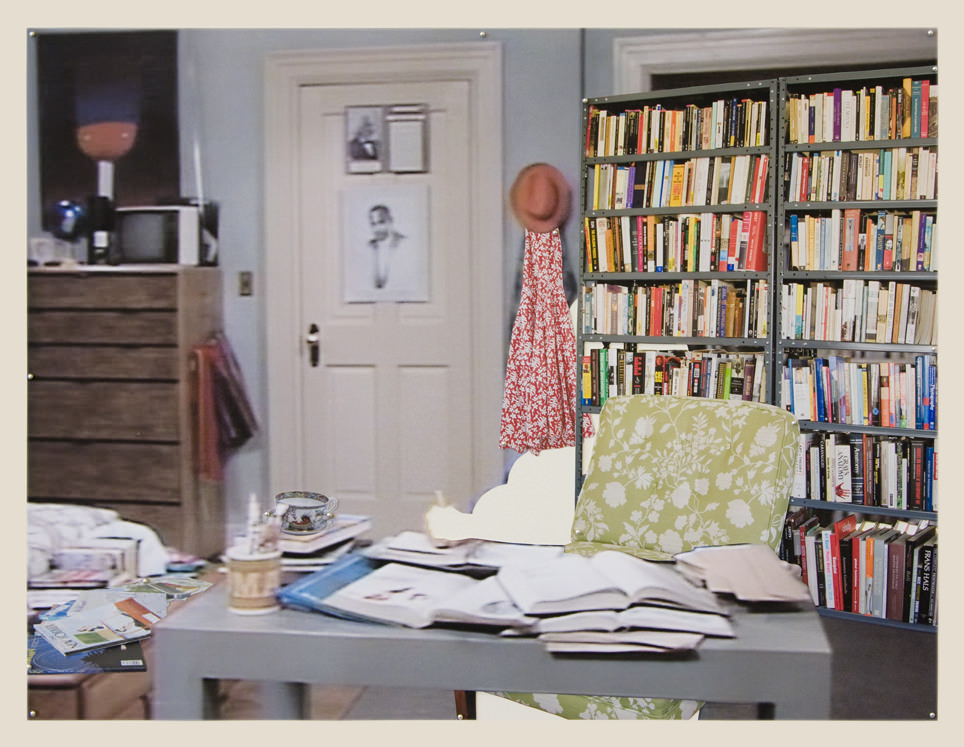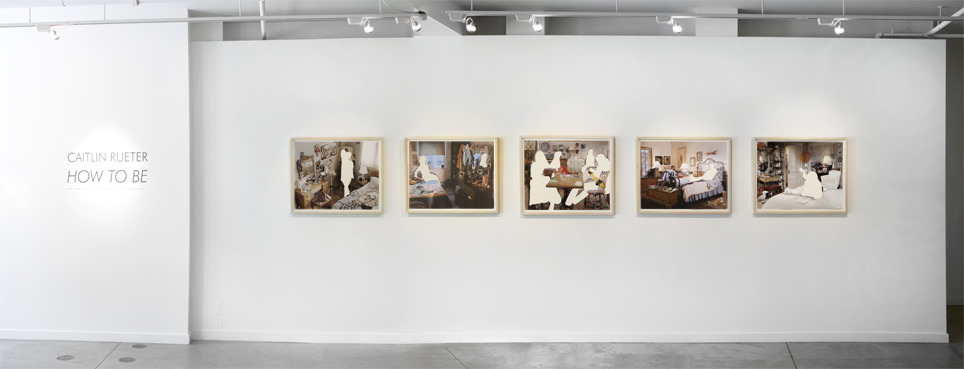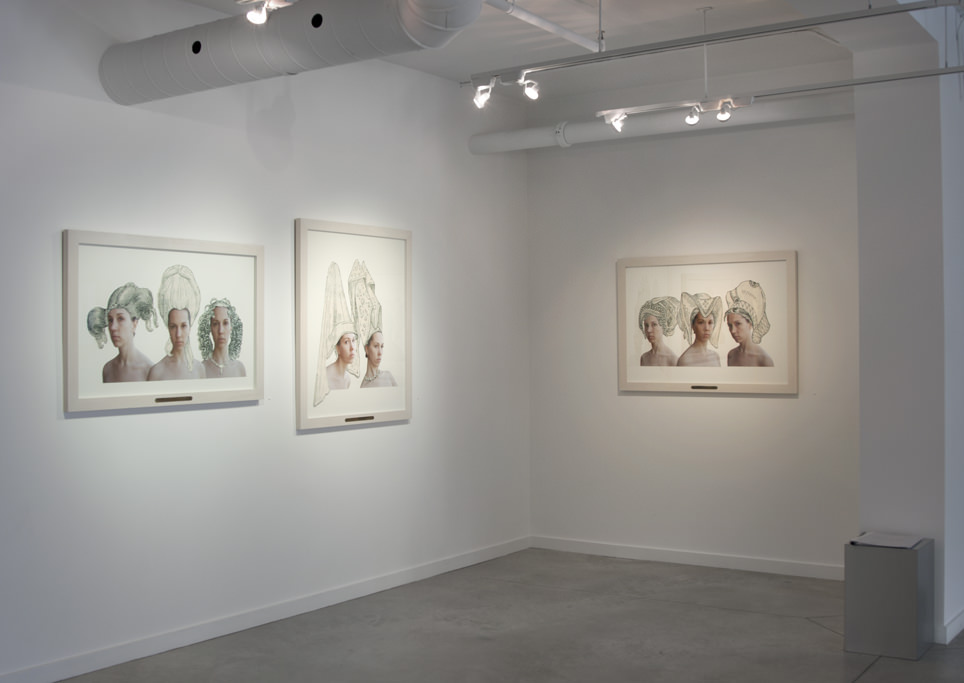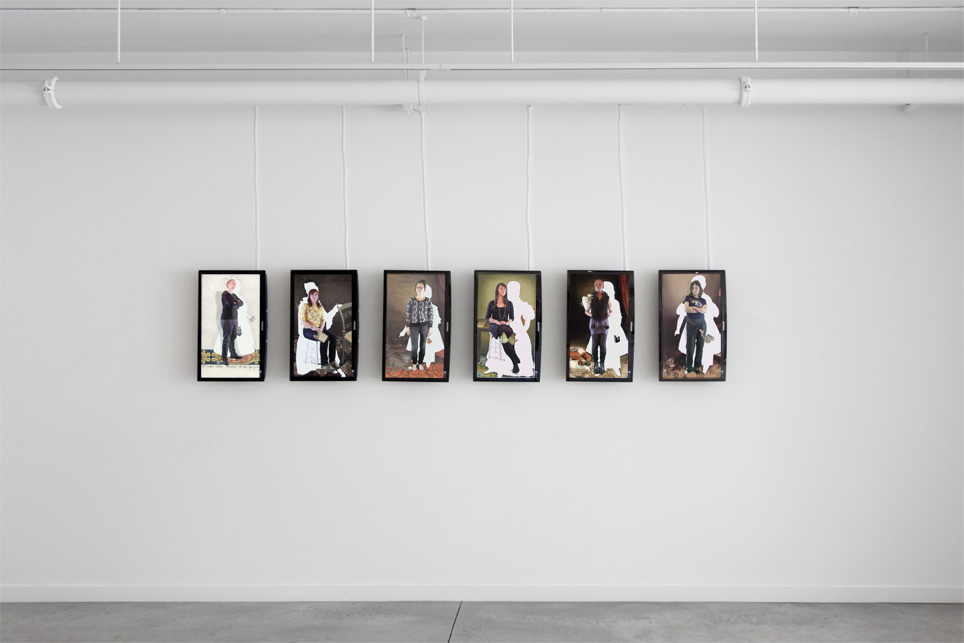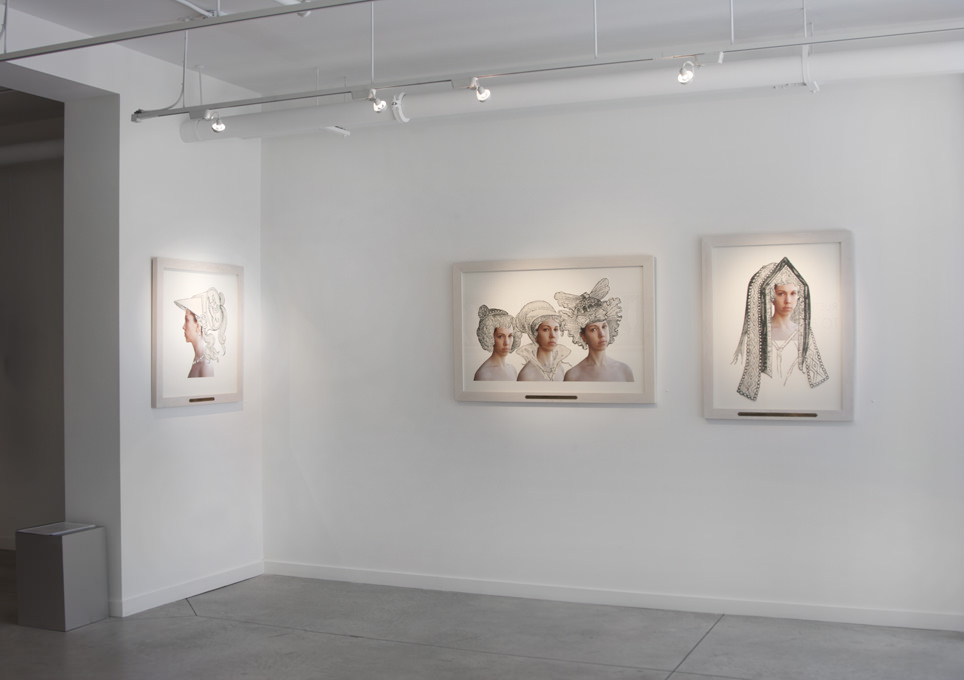How To Be
Caitlin Rueter, Solo Exhibition
June 9 – July 14, 2012
artists statement
How To Be is a series of exercises that revisit and reimagine early 19th century primers for "young ladies."
I stumbled upon these manuals while researching 19th century etiquette books. Most include etiquette but only as part of a more comprehensive course of education. They were intended for upper-class girls and women who had few opportunities for formal schooling. Instead, girls took their lessons from these books, serials and pamphlets and from their mothers or older sisters at home. The manuals include subjects ranging from etiquette and fashion to archery and riding, from botany, entomology and mineralogy to painting, dancing and embroidery. Each was meant to help a young woman navigate society and to keep her occupied, to battle the boredom that could lead to rebellion or other transgressions.
How To Be uses these young ladies' manuals to address themes of gender, class, and the dialogue between personal and political histories, identity and space. I methodically select and execute lessons from the primers, consider them in their historical context, then reconsider and reconceive them in the context of my own history. In my upcoming exhibition at OBC, I will show works from three exercises as the first installment of How To Be. These exercises, Lesson I: Ablutions, Lesson II: Moral Deportment, and Lesson III: The Cabinet Council, introduce central themes of the project.
Lesson I: Ablutions
Ablutions takes as its starting point early 19th century instructions for developing a sense of "style." I have paired self-portrait photographs with illustrations of period hair arrangements and headdresses taken from one of the young ladies' manuals.
Many of the manuals dedicate chapters to "The Toilet." Like contemporary fashion and teen magazines, they instructed their readers on how to present themselves, generally how to choose flattering and fashionable styles of dress. But unlike contemporary counterparts, these manuals were careful to locate their readers in a particular historical context and directed them to survey history for models of style to emulate and avoid.
The commonalities fascinate me. But from a more critical perspective, I am interested in how we might deconstruct and destabilize similar recurring patterns of control. In this simple lesson, I playfully contemplate ways of being, ways we've been, and how history refigures and repeats expectations of how to be.
Lesson II: Moral Deportment
Moral Deportment explores instructions for "correct" behavior. In this exercise I have solicited the participation of ten New York-based women artists. I filmed each subject as I read to her a passage from a young ladies' manual that concerns one of ten, "moral properties called for in the daily conduct and habitual deportment of young ladies": piety, integrity, fortitude, charity, obedience, consideration, sincerity, prudence, activity and cheerfulness. Together we parsed the text to consider what it meant in its historical context and potential contemporary applications. In pondering the text, our conversations were fluid and diverse -- sometimes personal, sometimes perfunctory, sometimes confounding, always illuminating -- perhaps not unlike those of the manuals' original users.
I have paired the footage from these interactions with portraits of girls and women from early 19th century American folk art. I extracted the figures from the paintings and superimposed my subjects into their spaces.
In other projects I have used my body as "the body in general." Here, I replaced the figures from the portraits with modern day subjects-women who, together, represent me-artists with whom I have shown or collaborated, each of whom has influenced my thinking. Their relationship with me is important to our personal interaction in creating the footage. It is also important to my interaction with the viewer, which is mediated by these other bodies.
In Moral Deportment, I am both instructing the subject and engaging in a conversation with her. I'm thinking, again, about history. History is didactic and dialectical; it both instructs and plays itself out in discourse and in conflict.
Lesson III: The Cabinet Council
The cabinet is "a secret receptacle, a repository... a small private chamber or room... a room devoted to the display of works of art; a gallery" or "the council-chamber in which the inner circle of government meet." A bedroom can be all of these things, a microcosm of the home and a safe, autonomous space.
In this exercise I have captured images of girls' bedrooms from television shows that I watched as an adolescent; shows that purported to guide their audience toward specific ways of being. I have removed the figures from each of the stills and inserted images of objects that form my own private spaces.
The shows have a particular (and peculiar) resonance for former watchers. Often more than the memories of lives we've lived, clouded by sentimentality and traumas, big and small, these shows give us distance. This distance allows us to critically examine the past and also to laugh at it. Images from these shows comprise the memory's visual landscape and are entwined in personal histories-both real and imagined. These shows not only populate our personal histories, but because they are shared, they blur the boundaries between personal and collective memory.
In conceiving this work, themes from earlier work, long the subject of women artists and feminist activists, also emerge-domestic space and the construction of identity; domestic space as confinement and a source of power; domestic space as a source of autonomy. But I am more interested in understanding how we articulate space in our histories; how the accidental imprecision of memory and the deliberate construction of narratives form the history of a space. I want to explore how these spaces circumscribe our views of the world, how time calls on us to reconfigure these spaces, how, in reconfiguring our histories, we edit them for the consumption of our audience.
- Caitlin Rueter, 2012
about the artist
Caitlin Rueter was born in Toronto, Canada. She received her BA from McGill University and studied at Ontario College of Art & Design before moving to the United States in 2002. There, she received a BFA from Lyme Academy College of Fine Art and, in 2009, her MFA from Parsons the New School for Design.
"Each project begins as an exercise in learning a new history. Coming to the United States as an adult, I am free to learn its history less conventionally than the way I learned Canadian history as a schoolgirl. Chasing the anecdotal and sometimes the apocryphal, I am as much interested in the way that I gather the information as I am in the information gathered."
Caitlin Rueter's work is exhibited internationally. She lives and works in New York City.
